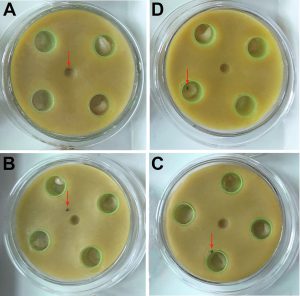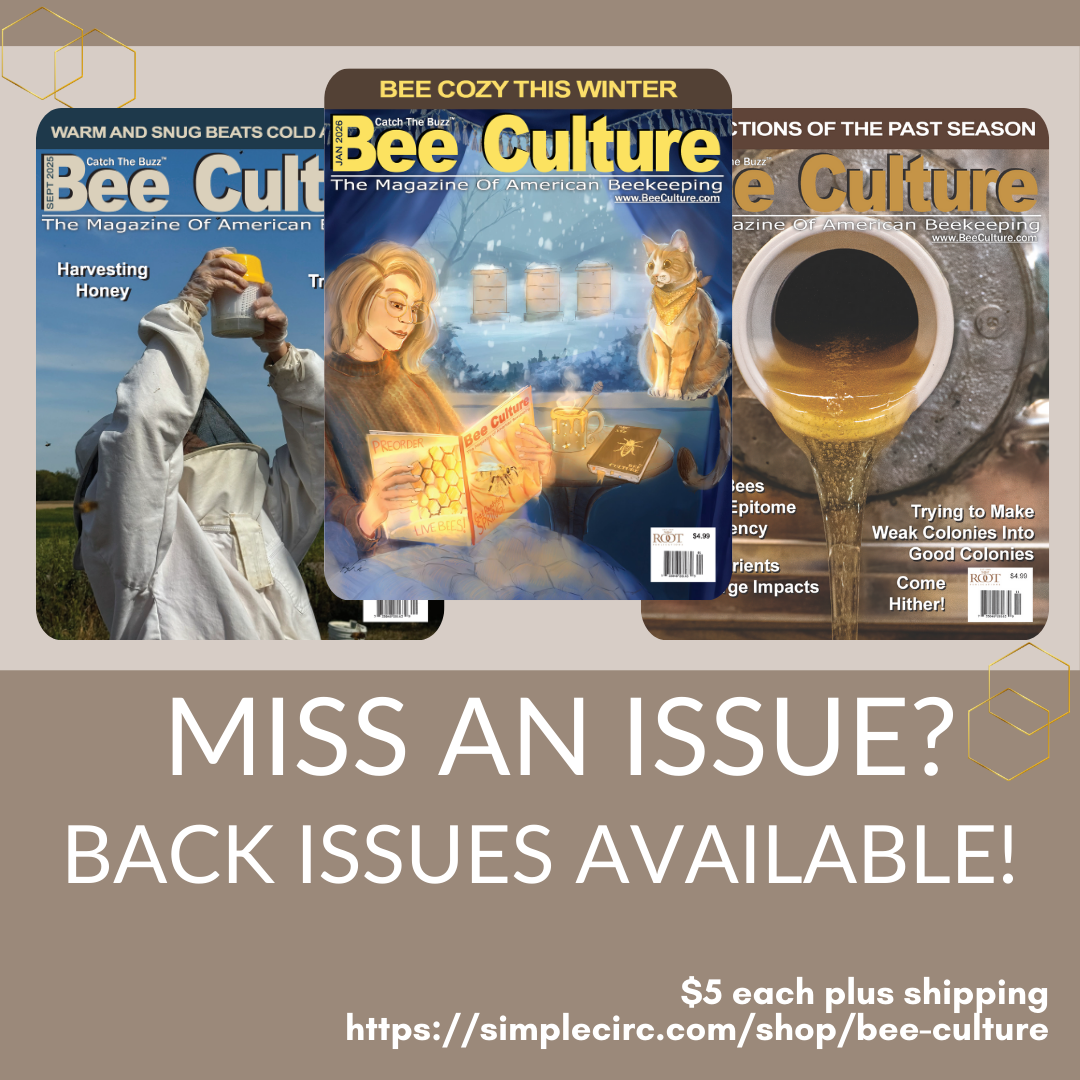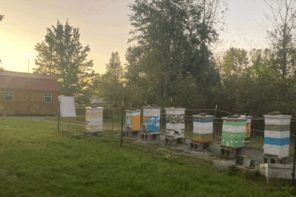Smells Promising
Jay Evans
It is pretty obvious that Varroa mites love honey bees. This love is realized by the mites’ sense of touch and smell since their eyesight, should it exist, is minimal. Research to determine, and hopefully exploit, how mites smell their hosts is now entering its fourth decade (!). Yves LeConte in France and others started teasing apart the cues used by mites to find bees in the dark (see “Attraction of the parasitic mite Varroa to the drone larvae of honey bees by simple aliphatic esters”, 1989, Science, Vol 245, Issue 4918•pp. 638-639•DOI: 10.1126/science.245.4918.638). Hopes have run high that the varroa smelling skills, and bee smells, could be harnessed in order to trick and kill varroa mites. While such controls are not available currently for beekeepers, recent work shows that the table is set for the current generation of scientists to finally apply what has been learned.
Wenfeng Li and colleagues in China and the US, including my USDA colleague Judy Chen, have just published a study showing the attractiveness to mites of European honey bees (Apis mellifera, the primary managed bee worldwide) and Asian honey bees (Apis cerana, the original host for varroa). Their paper (“The cell invasion preference of Varroa destructor between the original and new honey bee hosts”) is now in press in the International Journal for Parasitology, https://doi.org/10.1016/j.ijpara.2021.08.001. The scientists started with a behavioral approach. They used small arenas to test the preferences of mites for entering cells containing drone or worker pupae of each species. They studied the now-worldwide Varroa destructor, not the multiple Asian species that have not yet jumped to A. mellifera. Perhaps not surprisingly, these mites preferred A. mellifera worker brood to worker brood of A. cerana. V. destructor does not readily parasitize worker brood of A. cerana and, in fact Varroa species still connected with Asian bees tend to succeed not by reproducing in worker brood but in drone brood. What WAS surprising was that V. destructor also greatly prefers A. mellifera to A. cerana drone brood. This makes it clear that when V. destructor made its impactful jump from A. cerana to A. mellifera it did so with a major shift in its bee sensors, or at least has acquired a chemical fondness for its new host over the decades. Mites were three times as likely to choose A. mellifera drone brood over A. cerana in their choice arenas. Since it is almost impossible to collect V. destructor from A. cerana colonies, these trials involved mites collected from A. mellifera and it is possible they had learned, in their lifetimes, a taste for A. mellifera. To partially account for that, the authors gave mites two trials separated by time and showed that even on a second try they could not resurrect a passion for their ancestral host.

This study went on to provide a modern look at the smells released by bee hosts in both species and their attractiveness to mites. Both honey bee hosts had a similar array of cuticular hydrocarbons (CHC’s, commonly produced by and used by animals to share and perceive smells). As has been shown even within honey bee species, the ratios of different CHC’s varied between the two, pointing to specific chemical classes that might explain attractiveness to mites. The main differences in worker bees were found in the ‘alkenes’ (highly represented in A. cerana) and ‘methyl-alkanes’ (more common in A. mellifera). This is a hint that these classes might be especially smelly for female mites and perhaps most exploitable as baits or traps. For drones, there were quite striking differences in several chemical components, matching the workers but adding large differences in n-alkanes and ‘non-alkanes’. Basically, all classes of CHC’s differed significantly between the species for drone larvae.
To come full circle, the authors painted glass cylinders with CHC’s extracted from workers and drones of both species. The attractiveness of the fake bees exactly matched that of true larvae, with A. mellifera smells being favored and the strongest preference difference being for A. mellifera versus A. cerana drones. Along with showing that smell is king, since these glass cylinders look nothing like bees, this test points the way to really identifying the molecules that mites will (hopefully) die for.
In a second recent paper, Beatrice Nganso and colleagues in Israel, including Victoria Soroker, a well-known insect chemist who has spent much of her life studying the smells that unite insects and their associates, explore the ways mites pick up on the smells unique to their bee hosts. In Towards disrupting Varroa –honey bee chemosensing: A focus on a Niemann-Pick type C2 transcript (2021, Insect Molecular Biology, 30, 519–531, doi: 10.1111/imb.12722) they identify specific mite proteins that are turned on in response to the smells made by bees. In case your parents neglected to tell you, mites do not have noses and instead use cells at the tips of their feet (we think!) to perceive the smells around them. In those foot cells, one class of odor-related proteins was targeted since these proteins are known in other animals to relate to smells. Among those, one in particular was especially interesting. Using a gene knockdown technique (RNA interference) they attempted to silence that protein (“Niemann-Pick type C2”, although a better name is needed) and then determined whether this affected the ability of mites to smell. Fantastically, knocking down this gene indeed had an effect on the abilities of mites to locate hosts, as well as on mite survivorship overall. It is known that mites turn on a whole package of reproduction once they smell the right bee, and in fact that package was less likely to turn on when mites had reduced levels of this protein. The assay itself is not realistic for beekeepers (mites were submerged in a fairly expensive soup of the knockdown activator) but the insights could well lead to new ways to block mite smelling and the disastrous results of their post-smelling actions.
Scientists on several continents (sorry, Australia, your time will come) are actively pursuing ways to build on these studies and use the ‘foot-noses’ of mites against them. I, for one, have hope that these efforts could lead to a breakthrough control of this critical honey parasite.










